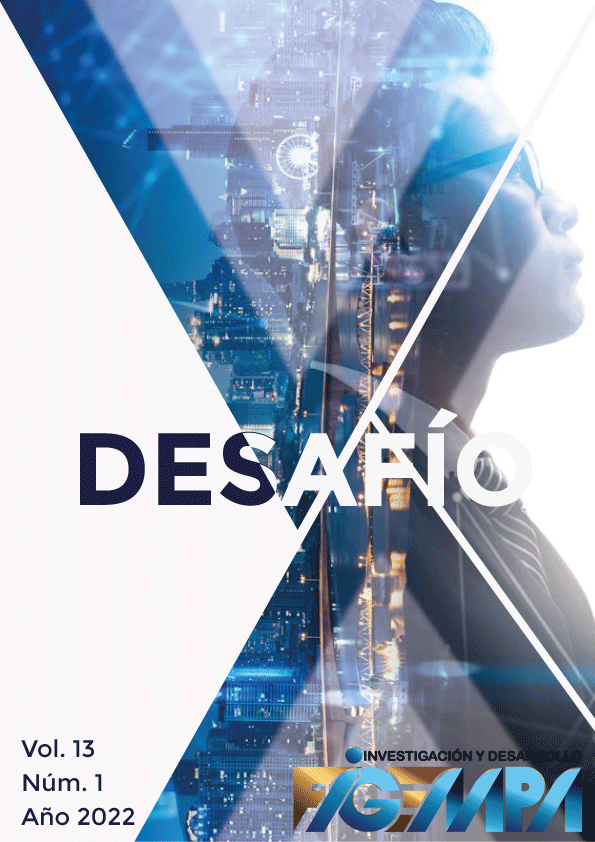Analysis of the normative framework of circular economy in Ecuador about the plastics sector
Main Article Content
Abstract
Worldwide, plastics industry is one of the most relevant productive sectors for generating employment, satisfying needs, and solving sanitary problems, among others. However, it generates a high negative impact on the environment, which causes health problems for humans, not only in its manufacture (due to the emission of greenhouse gases) but also due to the plastic waste generated for decades. Currently, plastic waste pollutes rivers, slopes, streams, oceans, and other marine and terrestrial ecosystems. In the last 65 years, the increment of plastics outpaced any other manufactured material. An estimated 8.3 billion metric tons (Mt) of virgin plastics have been produced to date. In Ecuador, this situation is not different. Production, consumption, and generation of plastic waste has grown uncontrollably; for this reason, generation and application of regulations that rule the behavior of society is absolutely necessary and urgent. In this study, Ecuadorian regulatory framework is analyzed. It is also shown how Ecuadorian regulatory framework supports the transition from a Linear Economy to a Circular Economy in the plastics sector. Circular Economy is a global solution to the great pollution that plastic has generated for decades. In addition, this study shows an analysis of the Ecuadorian progress in the context of sustainability from the generation of Circular Economy policies. A case study was carried out based on the plastics industrial sector, as well as the level of application of the Ecuadorian policies (law and regulation). In conclusion, despite having a regulatory framework on the application of Circular Economy, it is not implemented. At a general level and in the plastic sector, initiatives, projects and alignments are aimed only at promoting recycling and the incorporation of post-consumer recycled materials in the manufacture of single-use products. This practice has fostered a comfort culture preventing society from applying of Circular Economy principles. Ecuadorians must initiate their cultural change not only in the integral management of waste but also applying production and import policies. These policies must be aligned with compliance with the principles of the Circular Economy and sustainable development.
Downloads
Metrics
Article Details

This work is licensed under a Creative Commons Attribution-NonCommercial 4.0 International License.
References
Andrady, A.L. 2015. Persistence of Plastic Litter in the Oceans. In: Bergmann M., Gutow L., Klages M. (eds) Marine Anthropogenic Litter. Springer, Cham. https://doi.org/10.1007/978-3-319-16510-3_3
Asociación Ecuatoriana de Plásticos (ASERPLAS). 2021. Reciclaje y Sostenibilidad. Ecuador. https://www.plastico.com/temas/Reciclaje-y-Sostenibilidad
CAIRPLAS. 2021. Residuos Plásticos. Cámara de la Industria de Reciclados Plásticos. Argentina. Recuperado de https://cairplas.org.ar/residuos-plasticos/
Catalá, R y Gavara, R. 2001. Nuevos envases. De la protección pasiva a la defensa activa de los alimentos envasados. Arbor, 168 (661), 109–127. https://doi.org/10.3989/arbor.2001.i661.825
Código Orgánico del Ambiente (COA). Registro Oficial Suplemento 983 de 12 de abril de 2017, pp. 11 a 61. Ecuador
Comisión Europea. 2018. Residuos plásticos: una estrategia europea para proteger el planeta, defender a los ciudadanos y capacitar a las industrias. Recuperado de http://europa.eu/rapid/press-release_IP-18-5_es.htm.
Concejo Metropolitano de Quito. 2021. Ordenanza Metropolitana No. 022-2021. Ordenanza metropolitana reformatoria del Capítulo II, Título I, Libro IV.3 del Código Municipal que incorpora la Sección VII “para la reducción progresiva de plásticos de un solo uso y el fomento al desarrollo de sustitutos reutilizables, biodegradables y compostables en el Distrito Metropolitano de Quito”. Distrito Metropolitano de Quito (DMQ).
Constitución de la República del Ecuador (CRE). (Registro oficial 449 de 20 de octubre de 2008, pp. 13 a 117. Ecuador
Ecoembes. 2017. Resultados de los Planes de Prevención para los Envases Domésticos.
European Bioplastics. 2018. Bioplastics. Facts and Figures. Recuperado de: https://docs.european-bioplastics.org/publications/EUBP_Facts_and_figures.pdf
Geyer, R., Jambeck, J., Lavender, K., 2017. Production, use, and fate of all plastics ever made. Science Advances, 3 (7). https://doi.org/10.1126/sciadv.1700782
Heinrich Böll, F., 2019. Atlas del Plástico (Plastic Atlas S). Recuperado de https://sv.boell.org
Ley Orgánica de Economía Circular Inclusiva (LOECI). Registro Oficial Cuarto Suplemento Nro. 488 de 6 de julio de 2021, p.10. Ecuador
Ley Orgánica para la Racionalización, Reutilización y Reducción de Plásticos de un Solo Uso. Registro Oficial Cuarto Suplemento Nro. 488 de 6 de julio de 2021, pp. 6 a 19. Ecuador.
Liebmann, B., Köppel, S., Königshofer, P., Bucsics, T., Reiberger, T., Schwabl, P. 2018. Assessment of microplastic concentrations in human stool - final results of a prospective study. https://doi.org/10.13140/RG.2.2.16638.02884
Ministerio de Producción, Comercio Exterior, Inversiones y Pesca (MPCEIP). 2021. Libro Blanco de Economía Circular de Ecuador. Quito, Ecuador, p.21.
Nieves-Medrano, M.L. 2018. Origen y evolución de la matriz TOWS en la administración estratégica del siglo XXI. Revista de Administración y Finanzas.
Parlamento Europeo. 2018. Proyecto de informe sobre estrategia europea para el plástico en una economía circular. Recuperado de http://www.europarl.europa.eu/doceo/document/A-8-2018-0262_ES.html?redirect
PNUD. 2019. Informe de los Objetivos de Desarrollo Sostenible. Programa de las Naciones Unidas para el Desarrollo. Nueva York.
Santillán, M.L. 2018. Una Vida de plástico. UNAM, México. http://ciencia.unam.mx/leer/766/una-vida-de-plastico
World Wild Fund for Nature (WWF). 2019. Solución al Plástico: Contaminación asumiendo responsabilidades. Gland, Suiza. https://d2qv5f444n933g.cloudfront.net/downloads/informe_solucion_al_plastico___contaminacion_asumiento_responsabilidades.pdf

